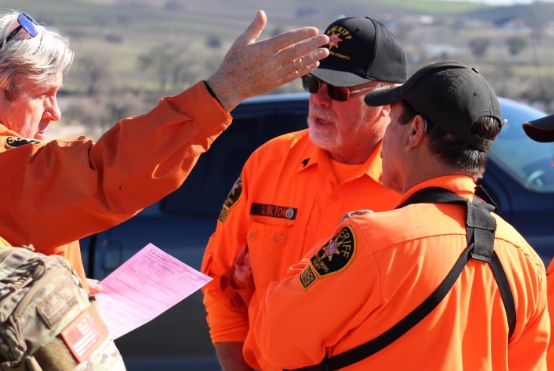Call 2-1-1
2-1-1 is an easy to remember three-digit phone number that brings people and services together. It is a non-emergency telephone number that connects individuals and families with information and community resources. If there is an emergency or disaster that affects people county-wide, you can always call 2-1-1 for the most up-to-date information. During such events it is very important to keep 9-1-1 open for people who have been injured or need immediate help. For more information about 2-1-1 or to search the directory for local services visit the United Way of SLO 2-1-1 website.
Learn More
SLO County Early Warning System Sirens
Although the San Luis Obispo County Early Warning System sirens were installed primarily to alert the public of an emergency at Diablo Canyon Power Plant, they can be utilized for any emergency where protective actions are necessary by the general public, such as evacuation due to a tsunami or dam failure. When the Emergency Alert System has been activated, the sirens will produce a steady wail for 3-5 minutes. If this happens, go indoors immediately and tune to a local radio or television station for up-to-date emergency information.
The Early Warning System sirens are tested regularly, including twice monthly silent tests, quarterly growl tests, and a full-scale annual test in late August. No action is required on the part of the public during these tests. For more information visit the SLO County Office of Emergency Services Website.
Learn More
Shelter in Place
If officials issue a shelter in place warning, that means staying inside with all doors and windows closed, and ventilation systems turned off. Sheltering reduces the chances of inhaling or receiving body surface contamination from radioactive materials if they pass overhead.
If you are told to shelter-in-place:
- Gather members of your household and pets inside (if children are at school, do not pick them up unless the school or the Emergency Alert System message instructs you to do so. If schools are sheltering students, they will not open their doors).
- Shut and tightly seal all doors and windows. Use duct tap and heavy plastic sheeting or place towels to fill gaps in doorframes or windows. Be prepared to improvise and use what you have available.
- Turn off systems that bring in outside air. These include furnaces, fireplaces, air conditioners, vents and clothes dryers.
- Move to the center of the house.
- Take a radio with you and stay tuned to a local radio or television station for additional information.
- If you must go outside, place a damp cloth or towel over your mouth and nose. This will limit the amount of radioactive materials you breath in. Limit your time outside as much as possible.
County officials will decide on sheltering or evacuating areas based on the nature of the emergency. You will be told what to do over local radio and television stations.
Learn More
Reverse 911
Reverse 911 is a service that provides information to the public during a disaster or emergency. If there is an emergency or disaster in your area, you will receive a Reverse 911 phone call with information on how to keep you and your family safe. All landlines are automatically set up, but mobile phones need to be registered with your address.
Learn More
Evacuation Planning & Kits
It is important to make sure that your entire family is prepared and informed in the event of a disaster or emergency. You may not always be together when these events take place and should have plans for making sure you are able to contact and find one another. The American Red Cross suggests meeting with your family or household members to discuss how to prepare and respond to emergencies that are most likely to happen where you live, learn, work and play. For more detailed information on creating a disaster preparedness plan visit The Red Cross website.
Being prepared means being equipped with the proper supplies you may need in the event of an emergency or disaster. Keep your supplies in an easy-to-carry emergency preparedness kit that you can use at home or take with you in case you must evacuate.
At a minimum, you should have the basic supplies listed below:
- Water—one gallon per person, per day (3-day supply for evacuation, 2-week supply for home)
- Food—non-perishable, easy-to-prepare items (3-day supply for evacuation, 2-week supply for home)
- Flashlight
- Battery-powered or hand-crank radio
- Extra batteries
- First aid kit
- Medications (7-day supply) and medical items
- Multi-purpose tool
- Sanitation and personal hygiene items
- Copies of personal documents (medication list and pertinent medical information, proof of address, deed/lease to home, passports, birth certificates, insurance policies)
- Cell phone with chargers
- Family and emergency contact information
- Extra cash
- Emergency blanket
- Map(s) of the area
Learn More


